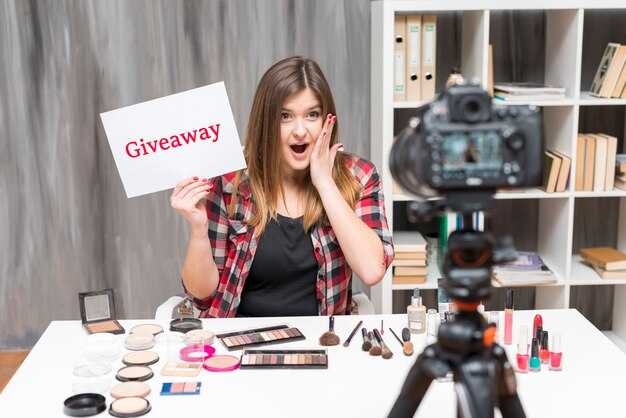Many people believe that avoidant individuals don’t want love. That’s a misconception. They often desire connection even more intensely than it appears. The reality is they tend to form deep bonds with only a particular kind of partner — and if you don’t understand who that is, you’ll keep chasing someone who keeps slipping away. Sound familiar? One moment they’re fully present; the next they become distant and cool. This will show you how to finally make that connection last. Keep watching. Does this ring true? At first, everything feels magical: they’re warm, attentive, and sometimes a little open. You think, “This could be it.” Then, seemingly without warning, things shift. Texts slow down, calls become brief, plans dissolve into vague ideas. One day they’re holding your hand as if you were the only person that matters, and the next they withdraw emotionally or physically and you can’t understand why. What do you do? You overthink. You send more messages. You try harder. Maybe you even beg for reassurance. You replay conversations and moments, wondering whether you said something wrong or if you’re simply not enough. It’s draining. That push-pull pattern makes you question everything: Did I scare them off? Am I too much? Am I doing something wrong? But here’s the key point: your love isn’t the problem. Your effort isn’t the problem. It’s the way you approach the connection. Once you grasp that, everything shifts. Here’s a surprising truth: people with avoidant attachment don’t bond under pressure — they bond under peace. Think about it. If you’ve been chasing, texting nonstop, or seeking constant reassurance, you’re actually communicating in the wrong way. What feels like love to you comes across as pressure to them. And pressure doesn’t draw them in; it pushes them away. It’s not that they don’t care — it’s that their nervous system doesn’t register safety in high-intensity situations. When you try harder to prove your love, an avoidant often feels cornered. That’s threatening. They begin to withdraw. Picture it this way: you squeeze the hug harder because you want security, but to them it feels like being trapped in a shrinking room. Closeness equals danger rather than comfort. So when you chase, they step back — not because you’re lacking, but because the pressure is something their system can’t tolerate. To connect with an avoidant, you must stop the chase. Here’s why the chase happens in the first place. You pursue because you fear losing them. You notice the distance and instinctively try to reel them back in to demonstrate your love and worth. But that exact behavior is what triggers their retreat. Avoidant people don’t feel safe with intensity; they feel smothered and cornered. They don’t interpret your actions as love but as demands. In the face of pressure, their nervous system signals retreat. You’re seeking closeness to help them feel secure, but for them closeness can register as danger. Many avoidants are wired to value independence and space. When you push, they pull because their body is telling them to protect their freedom. So when you sense them drifting, stop chasing and start creating safety. That’s how the push-pull cycle ends. It’s time to accept a difficult truth: this isn’t about your worth or the authenticity of your feelings. The real issue is the strategy you use. Chasing, overexplaining, or constant reassurance creates pressure instead of safety — and avoidant people don’t bond under pressure; they bond under calm. You might be asking, “But I’m giving everything. Why isn’t that enough?” Your love is genuine, but it can feel overwhelming to someone with an avoidant style. They don’t feel secure around urgency; they need peace, not chaos. It’s not that you’re too emotional — it’s that your energy reads as intense. To an avoidant, intensity equals threat. So stop overextending yourself. You don’t have to prove your value or chase them down. What helps is steadiness, patience, and a calm presence. Many people fail with avoidants because they mistake chasing for caring. When distance appears, they think the answer is to try harder, to give more — but that only pushes the avoidant farther away. The more effort you pour in, the more trapped they feel. They interpret your need for closeness as suffocation and respond by stepping back. The cycle repeats: you chase, they retreat, you give more, they distance further. The truth is avoidant people do not bond through intensity; they bond through steadiness. The tighter you try to hold on, the faster the connection can slip through your fingers — like gripping sand: the harder you squeeze, the more you lose. The antidote is a different kind of intensity: calm, firm boundaries, and patience. Consider this analogy: avoidants bond like cats, not dogs. Dogs come running when called, craving affection and closeness. Cats, however, behave differently: if you chase them, they bolt. If you sit quietly, unthreatening, they may eventually approach and curl up in your lap when they’re ready. Avoidant people are like those cats. The more you chase, the more they pull away. Pressure makes them feel trapped; they must choose closeness rather than be forced into it. Chasing feels like cornering, and they instinctively back away. Now flip the script. If you remain calm, grounded in your own energy, and stop pursuing, they begin to feel safe. They may come closer on their timetable. The goal is not to force closeness but to create an environment in which they can naturally choose to connect — just like a cat that comes when it feels ready. Avoidants don’t bond by being smothered; they bond when they feel free enough to get close. When you stop the chase, you open the space for them to return. So stop running after them. Be the steady, calm presence in their life and observe how they gradually lean in. This is the game changer: to form a lasting bond with an avoidant, become the calm, reliable partner they can trust. Don’t be the storm they flee. Avoidants need steadiness, not spectacle; peace, not chaos. How do you show up in a way that fosters safety? Be the steady flame, not the firework. Avoidants don’t need constant excitement; they need reliability. Keep your commitments. Show up when you say you will, but avoid smothering them with demands. Set boundaries without drama. Communicate your needs calmly — no scenes, no pleading for attention. Choose patience over pressure. Let the relationship develop on its own timeline without rushing them. When you offer calm and consistency, their nervous system can begin to feel safe in your presence. You don’t need to chase; you need to be present, grounded, and confident in your own energy. What does that calm, secure energy look like in everyday life? Here are concrete examples. Keep messages short and measured rather than long, anxious texts. For instance: “I’d love to connect later. I’ll give you space until then.” No pressure, no overexplaining — simple, direct communication. Maintain a full life of your own: hobbies, work, friendships. Emotional independence signals that you don’t depend on them to feel whole, which helps them feel safer around you. Respect their need for space, but don’t vanish. If they pull away, don’t ghost them; acknowledge their need for distance while remaining available: “I’ll give you space, but let me know when you want to talk.” Set clear, non-demanding boundaries. Express needs calmly — not through begging or manipulation. For example: “I need more clarity on this, but I can wait until you’re ready.” That communicates respect for their pace while honoring your own requirements. Showing up consistently, calmly, and grounded creates the kind of environment where an avoidant can feel safe enough to draw nearer without feeling overwhelmed. Remember: avoidants don’t need fireworks; they need a steady, peaceful presence. They want connection, but it must feel safe rather than suffocating. Avoidants are wired to protect their freedom; closeness can feel threatening, not because they lack desire for love, but because vulnerability has felt risky to them in the past. Their nervous system often pushes them away from anything that resembles entrapment. What they truly need is peaceful consistency — a partner who shows up reliably without making demands, who respects space without disappearing, who allows them to open up in their own time. You can’t force a deep bond by drowning them in attention or constant validation. Like a plant, too much water drowns it and too little lets it wither; what sustains growth is steady sunlight, calm, and room to breathe. If you want to build a connection with an avoidant, stop trying to prove yourself and instead create the conditions where they feel safe, respected, and unpressured. Peace gives them the space to come closer at their own pace. Now, how do you actually become the partner an avoidant can connect with? It’s about generating safety, calm, and consistency. Here’s a step-by-step blueprint. Step one: keep communication brief and composed. No long justifications or frantic messages. A concise line like, “I’ll give you space, but let me know when you’re ready to talk,” demonstrates respect for boundaries without applying pressure. Step two: keep your life full and active. When you’re engaged in work, interests, and friendships, you signal emotional stability and independence, which increases your attractiveness because you don’t rely on them for fulfillment. Step three: give space without disappearing. Honor their need for distance, but remain present and reachable: “I’m here when you want to connect.” That preserves the link while respecting their independence. Step four: set clear boundaries calmly. State your needs without demanding immediate answers. For example: “I need some clarity on this, and I’m happy to wait until you’re ready.” This honors both their pace and your own boundaries. Following these steps helps build a relationship that feels secure and steady, allowing an avoidant the freedom to bond in a natural way. Now for the uncomfortable question: what if you’ve done everything right — stayed calm, respected space, set boundaries — and they still won’t bond? Understand this: it’s not a rejection of you, it’s clarity about their current capacity and readiness. Not everyone can offer the depth of connection you seek at the same time you seek it, and that is not your fault. If someone continues to pull away despite your best efforts, it may simply mean they aren’t able to meet you where you are in this moment. And that’s okay. This can be the hardest realization: you do not have to prove your worth. You don’t need to chase, overexplain, or change who you are to win someone’s love. You can show up authentically, steady and respectful — if they can’t match that energy or meet your needs, that is their limitation, not your failure. You can’t force someone to bond; you can only cultivate the conditions where bonding is possible. If they’re not ready or capable, it says nothing about your value. So hold onto your standards and your true self. The right person will lean in; if they don’t, it’s their loss. How do you draw the right kind of partner, especially an avoidant one? It comes down to steady energy. The person who responds to panic and chasing is rare. Most will be attracted to calm, grounded presence. When you stop chasing, you move from neediness to confidence. You stop seeking validation and focus on the value you provide. That steady, self-assured energy is magnetic. Showing up as emotionally balanced, independent, and not reliant on someone else for your happiness signals that you have your own life, clear boundaries, and that you don’t need someone to complete you — which is deeply attractive. The aim isn’t to force connection but to make room for it. The right person will recognize your calm and move toward you, appreciating your respect for their space and your ability to be present without overwhelming them. The more you embody steady, confident energy, the more people, including avoidants, will feel safe around you. Safety is their prime need. When you are calm, confident, and secure in yourself, you become the partner they can trust and eventually choose to lean into instead of run from. Here’s your challenge: commit to calm energy. If you’re ready to stop chasing and start attracting, type “calm builds bonds” in the comments below as your pledge to show up steady, grounded, and confident. Save this video for moments when you’re tempted to overthink or overextend; let it be your reminder to choose peace over panic. And be sure to subscribe for more guidance on forming lasting, healthy connections. The next video will explain how to identify genuine consistency in just 14 days so you no longer waste time on mixed signals. Finally, hold this truth close: avoidant people are most likely to form lasting bonds with partners who choose calm over chaos, space over control, and self-worth over chasing. When you stop pursuing and start prioritizing your peace, you become the kind of energy that attracts the right person. There is no need to beg for love or to alter who you are. Be grounded, be steady, and honor your own needs — and the right people will come closer. If someone doesn’t, that reflects on them, not you. Your peace matters more than any frantic message, explanation, or tactic to make someone stay. When you regulate your emotions and remain steady, you stop handing the reins of your wellbeing to fleeting impulses. That steady energy is magnetic. Commit to being that calm, steady presence. Choose peace. Choose your worth. Choose the energy that invites genuine, lasting love. Thank you for watching — if this landed for you, comment below, hit like, and subscribe. In the next video, learn how to spot real consistency in 14 days. Until then, stay steady, stay grounded, and remember: you are enough.














